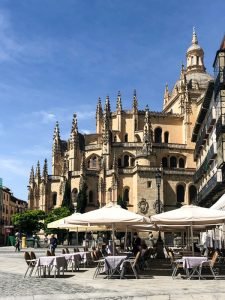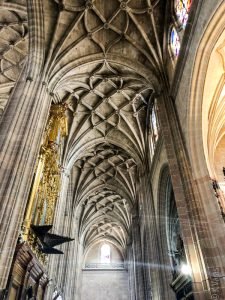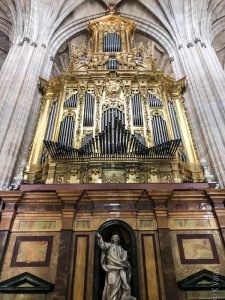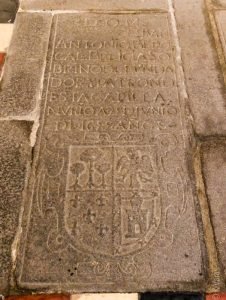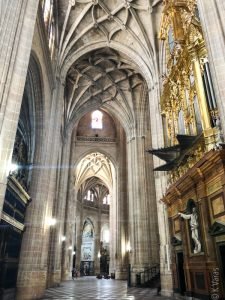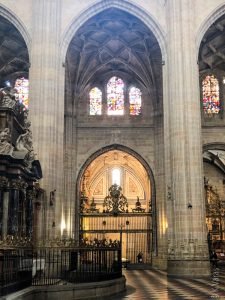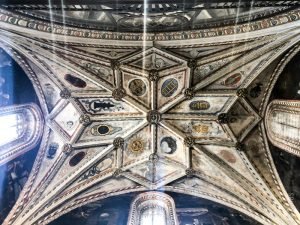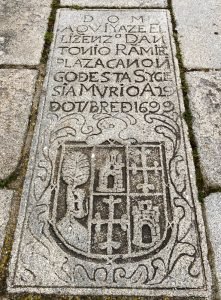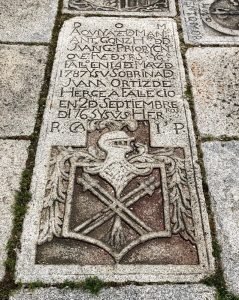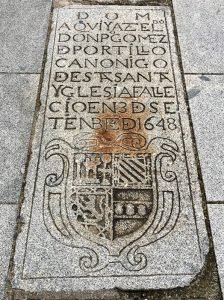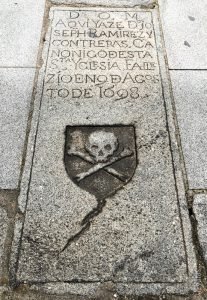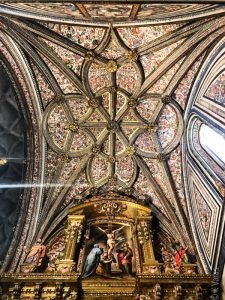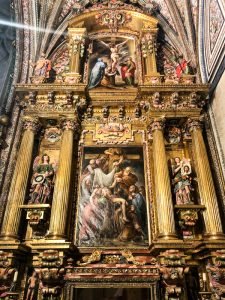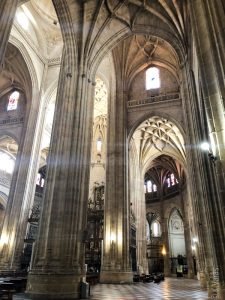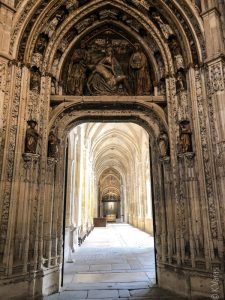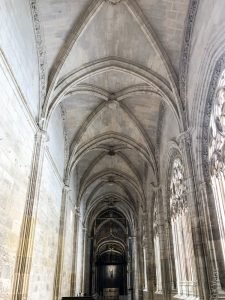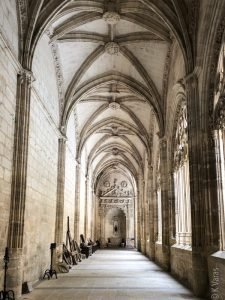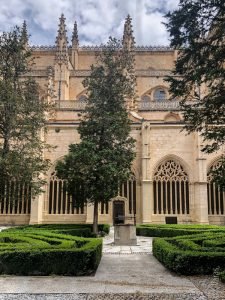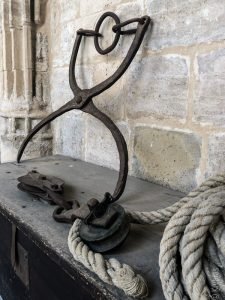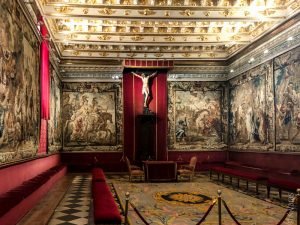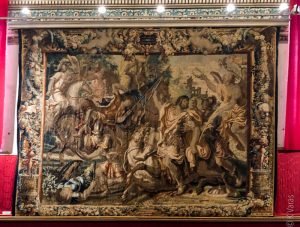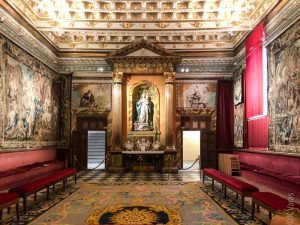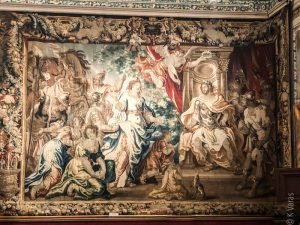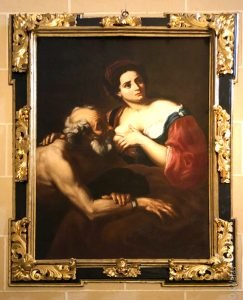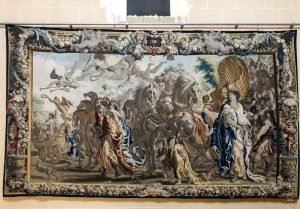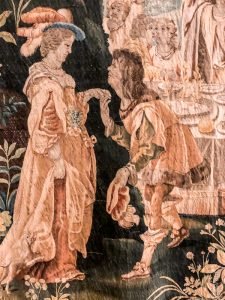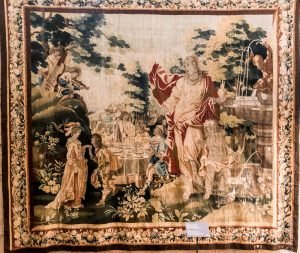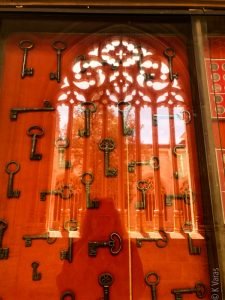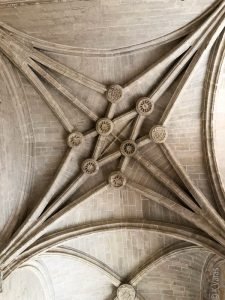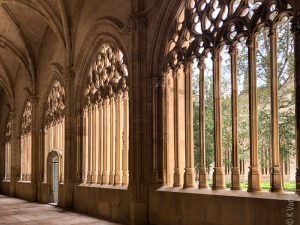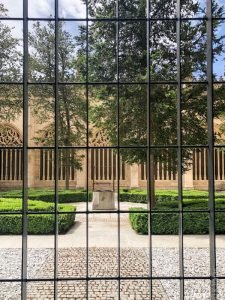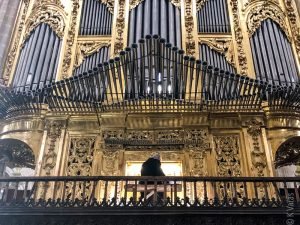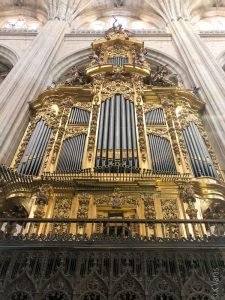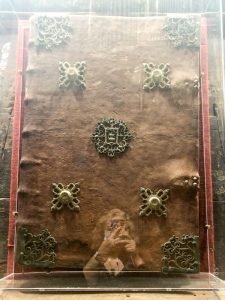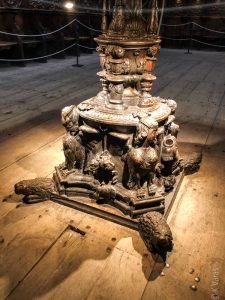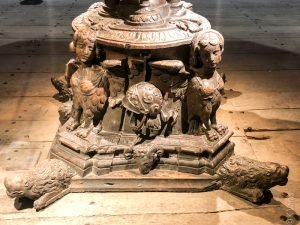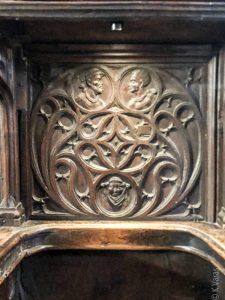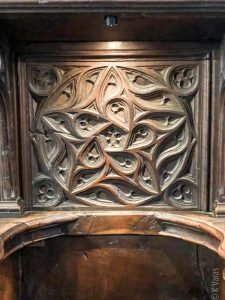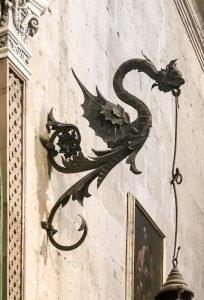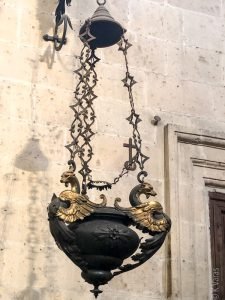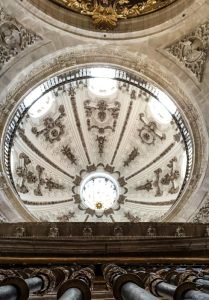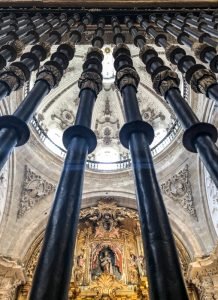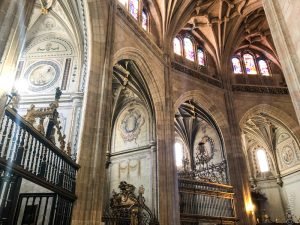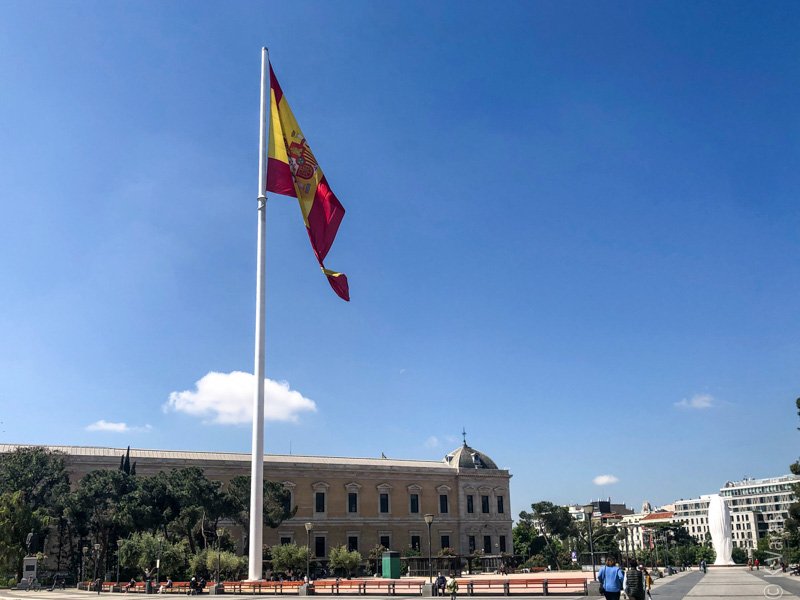
Catedral de Segovia
Segovia’s cathedral was built in the XVI century in the late Gothic style and was dedicated to the Virgin Mary. It is very striking on the outside, with many decorated pinnacles pointing to the heavens. It reminds me a little of the cathedral in Sevilla, though this one is more dainty, somehow, if dainty is a word that can be used when describing a Gothic cathedral. The amount of detail really is quite impressive. I expected the same level of decoration on the inside and I wasn’t disappointed. There are plenty stained-glass windows, beautiful wood carvings in the pews, and an amazing ceiling. As I walked around from capilla to capilla, I admired the craftsmanship and artistry inside but the thing that really impressed me was the double organ. As I got closer I realized that someone was playing it, or, rather, rehearsing or tuning it. I’m not a musicians and know very little about organs, but I quite enjoyed whatever the fellow was doing up there. It certainly enhanced the ambiance.

The back part of the cathedral has a massive walled-off plaza that has many gravestones laid out in a pattern, though, when I first came out it wasn’t very obvious that’s what they were. That’s because the stones are quite old, many from the mid to late XVII century, and many have faded. I found the inscriptions that were still legible quite fascinating, too, though more in style than content: the typography was what looks like the classic Times Roman (there is a reason this font is called what it’s called) but the randomness of line breaks was, let’s say, inspired. I guess when you have to chisel letters in stone it’s hard to change your mind when you realize the words won’t fit well though a little forethought would have gone a long way. I’m going to give the stoneworkers benefit of the doubt, however, since it is possible that they didn’t know how to read and were just copying someone else’s text.
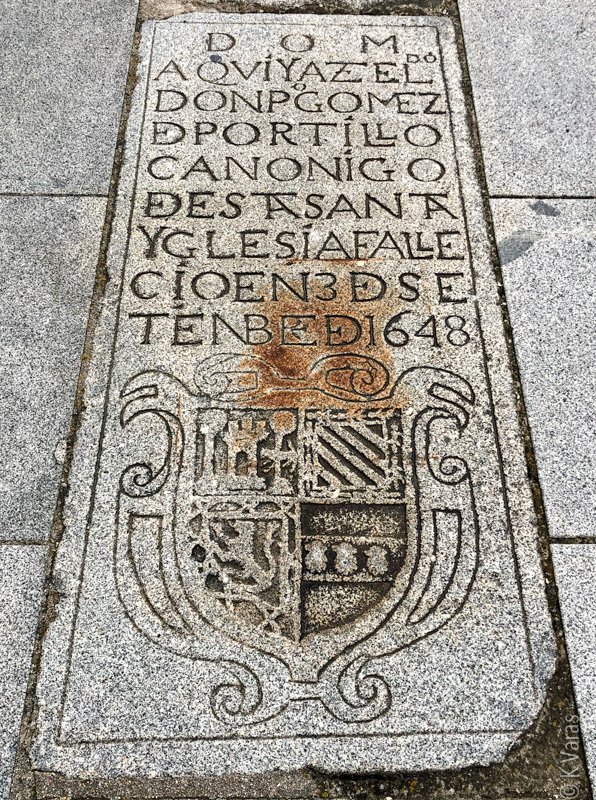
Back inside, I found the cloister and its garden, though that was closed to visitors. The upper part of the cloister, however, houses the Tapestries Hall where the walls are covered by many large and very intricate arrases. I found these fascinating because there are very few castles or palaces where you can see such well-preserved wall coverings. Since these very practical artworks were very common in the past, not only to dress up rooms but also to keep them warm (room temperature having a very different meaning in stone). Seeing these not only made me appreciate the artistry, but also gave me a visual memory I will be able to use when visiting other castles, ones where time and the elements (and, most likely, men) have destroyed these previously-common wall features.

Next, I went looking for the Capilla del Santísimo (Chapel of the Blessed Sacrament) which is hidden and off to the side of the main cathedral, and it’s almost like a mini church of its own. Unfortunately, it too was blocked off with a huge iron gate and I could only glimpse its cupola above.

All in all, I did enjoy my visit to the cathedral. I have to admit it was much more beautiful on the inside than I had expected, and didn’t have that overwhelming and sometimes oppressive feel I’ve come to expect in places like this. It was definitely worth taking a look.




